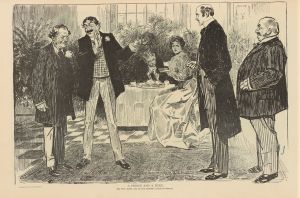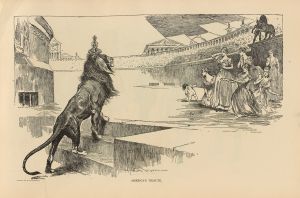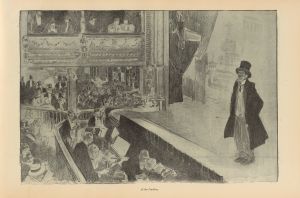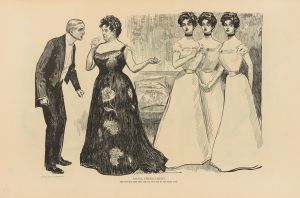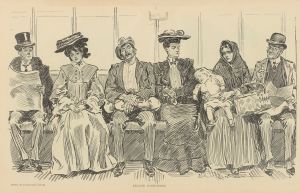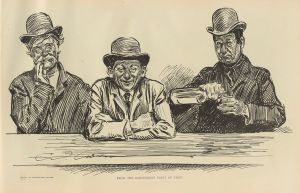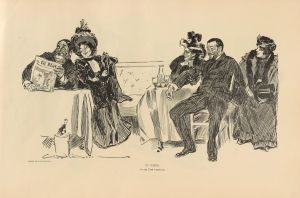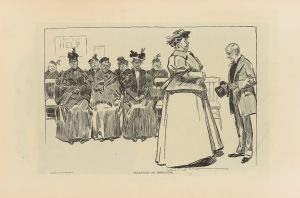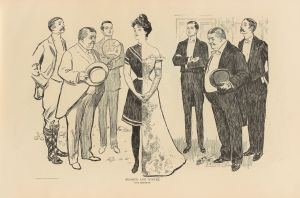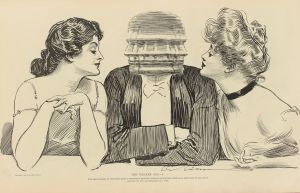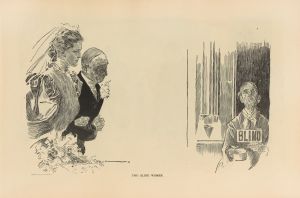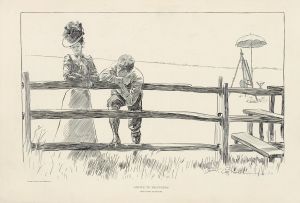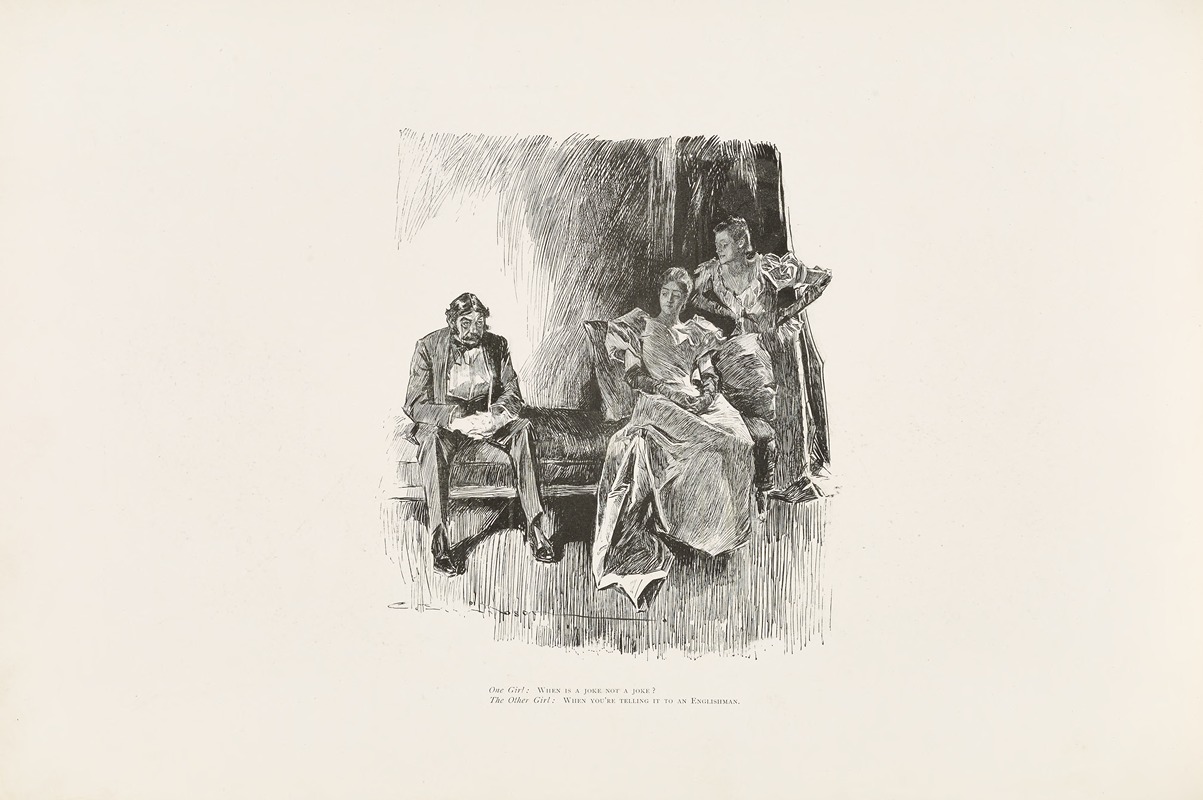
One girl; When is a joke not a joke
A hand-painted replica of Charles Dana Gibson’s masterpiece One girl; When is a joke not a joke, meticulously crafted by professional artists to capture the true essence of the original. Each piece is created with museum-quality canvas and rare mineral pigments, carefully painted by experienced artists with delicate brushstrokes and rich, layered colors to perfectly recreate the texture of the original artwork. Unlike machine-printed reproductions, this hand-painted version brings the painting to life, infused with the artist’s emotions and skill in every stroke. Whether for personal collection or home decoration, it instantly elevates the artistic atmosphere of any space.
Charles Dana Gibson was an influential American illustrator, best known for his creation of the "Gibson Girl," a representation of the idealized American woman at the turn of the 20th century. His illustrations captured the spirit of the era and were widely published in magazines such as Life, Scribner's, and Harper's. One of his works, "One girl; When is a joke not a joke," is part of his extensive portfolio that showcases his keen observation of social norms and gender roles during his time.
The illustration "One girl; When is a joke not a joke" was published in the early 1900s, a period when Gibson's work was at the height of its popularity. The piece is a black-and-white drawing, typical of Gibson's pen-and-ink style, which was characterized by its detailed line work and expressive characters. This particular illustration is part of a series that often explored themes of courtship, social interaction, and the complexities of relationships between men and women.
In "One girl; When is a joke not a joke," Gibson likely examines the nuances of humor and its impact on social interactions, particularly from the perspective of a woman. The title itself suggests a contemplation on the boundaries of humor and the point at which a joke may become inappropriate or offensive. This reflects Gibson's ability to infuse his work with commentary on societal norms and the shifting dynamics of gender roles during the early 20th century.
The "Gibson Girl" was a cultural icon that represented the independent and modern woman of the time. She was often depicted as confident, stylish, and socially adept, embodying the changing attitudes towards women's roles in society. Gibson's illustrations, including "One girl; When is a joke not a joke," contributed to the dialogue about women's evolving place in the world, as they began to seek more autonomy and challenge traditional expectations.
Gibson's work was not only artistically significant but also culturally impactful. His illustrations were widely circulated and helped shape public perceptions of femininity and masculinity. The "Gibson Girl" became a symbol of the Progressive Era's new woman, who was educated, active, and engaged in social issues. This was a time of significant change, as women were increasingly advocating for their rights, including the right to vote, which would eventually be granted with the passage of the 19th Amendment in 1920.
While specific details about the context or reception of "One girl; When is a joke not a joke" are limited, it is clear that the work fits within Gibson's broader oeuvre, which consistently engaged with the themes of gender and society. His illustrations remain a valuable resource for understanding the cultural and social dynamics of the early 20th century, offering insight into the ways humor, relationships, and gender roles were navigated during this transformative period.
Overall, Charles Dana Gibson's "One girl; When is a joke not a joke" is a testament to his skill as an illustrator and his ability to capture the complexities of human interaction. Through his art, Gibson provided a lens into the societal changes of his time, making his work both historically significant and enduringly relevant.





